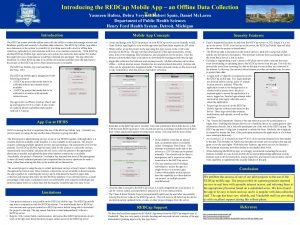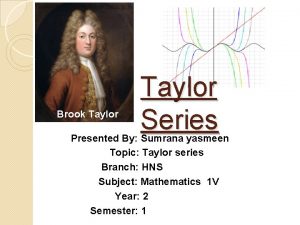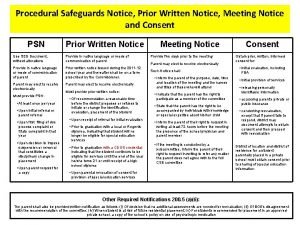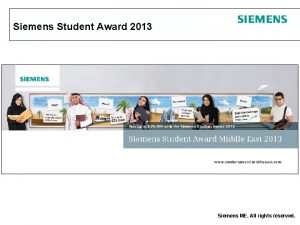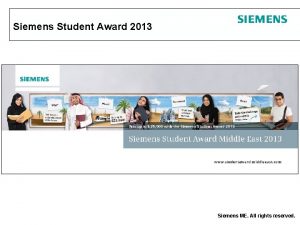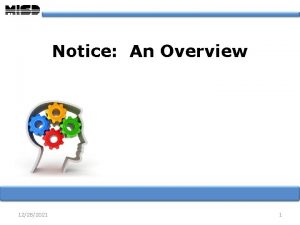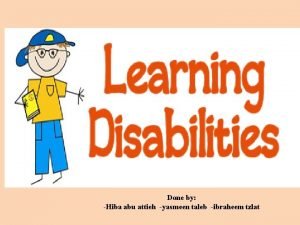YASMEEN IS VISITNG 10 35 1 Notice the



























- Slides: 27

YASMEEN IS VISITNG 10: 35 1

Notice the sticky note on the TV, and the mail stuck in the wallet. Why are they there? 2

Contextual Inquiry Combining “looking” and “asking” by immersing oneself into a particular context/culture: understand mental models and work practices “The core premise of Contextual Inquiry is very simple: go where the customer works, observe the customer as he or she works, and talk to the customer about the work. Do that, and you can’t help but gain a better understanding of your customer. ” 3

Contextual Inquiry: Principles Context: in the setting of the participant Relationship: you are the apprentice, participant is the expert Interpretation: observed facts must be considered for design implications Focus: lots of themes will emerge, but this helps to orient the team 4

Expert/Apprentice You are the noob What does this mean? Be a keen observer Ask questions Be eager to learn Admire the master Aspire to see the world as the expert does 5

Interviewing Summaries vs. ongoing experience “I got to work, checked my email and had a cup of coffee” [abstract summary] “I got to work, looked over my email, answered messages from my boss, decided to have some coffee, walked to the coffee machine, found there was no coffee, so I made coffee…” [concrete detail] 6

Design Methods: LEARN CPSC 481: HCI I Fall 2012 Anthony Tang, with acknowledgements to Julie Kientz, Saul Greenberg, Ehud Sharlin, Jake Wobbrock, Dave Hendry, Andy Ko, Jennifer Turns, & Mark Zachry 7

LEARN from your data Now that you have a huge stack of notes and ideas from all of your LOOKing and ASKing, it’s time to make some sense of the data Methods are intended to help you organize your thinking, and express it to help make it concrete and real 8

9

10

11

12

13

Error Analysis Activity: List all of the errors that could happen when driving a car. Activity 2: Why does that error occur? 14

15

16

17

18

19

20

21

22

23

Secondary Research Quick Activity: What are some sources you might look at for secondary research for your projects? 24

25

Summary Apply “Learn” techniques as a way to process the data you gather from “Ask” and “Look” Affinity diagrams; secondary research; flow analysis; cognitive task analysis; error analysis; character profiles Some learning tasks can help you figure out who to talk to for “Ask” and “Look” e. g. , secondary research, cultural comparisons 26

Randy Pausch’s Tips for Working in a Group Meet people properly. Find things you have in common. Make meeting conditions good. Let everyone talk. Check your egos at the door. Praise each other. Put it in writing. Remember that “politics is when you have more than 2 people” – with that in mind, always CC (carbon copy) any piece of email within the group, or to me, to all members of the group. This rule should never be violated; don’t try to guess what your group mates might or might not want to hear about. Be open and honest. Avoid conflict at all costs. Phrase alternatives as questions. http: //www. cs. cmu. edu/~pausch/Randy/tipo. For. Groups. html 27
 Yasmeen hafeez
Yasmeen hafeez Define immunity
Define immunity Brook taylor mathematician
Brook taylor mathematician Yasmeen amer
Yasmeen amer Nguyên nhân của sự mỏi cơ sinh 8
Nguyên nhân của sự mỏi cơ sinh 8 Phản ứng thế ankan
Phản ứng thế ankan Voi kéo gỗ như thế nào
Voi kéo gỗ như thế nào Thiếu nhi thế giới liên hoan
Thiếu nhi thế giới liên hoan Phối cảnh
Phối cảnh điện thế nghỉ
điện thế nghỉ Một số thể thơ truyền thống
Một số thể thơ truyền thống Thế nào là hệ số cao nhất
Thế nào là hệ số cao nhất Trời xanh đây là của chúng ta thể thơ
Trời xanh đây là của chúng ta thể thơ Hệ hô hấp
Hệ hô hấp Các số nguyên tố
Các số nguyên tố đặc điểm cơ thể của người tối cổ
đặc điểm cơ thể của người tối cổ Các châu lục và đại dương trên thế giới
Các châu lục và đại dương trên thế giới Tư thế worms-breton
Tư thế worms-breton ưu thế lai là gì
ưu thế lai là gì Tư thế ngồi viết
Tư thế ngồi viết Bàn tay mà dây bẩn
Bàn tay mà dây bẩn Các châu lục và đại dương trên thế giới
Các châu lục và đại dương trên thế giới Mật thư anh em như thể tay chân
Mật thư anh em như thể tay chân Bổ thể
Bổ thể Từ ngữ thể hiện lòng nhân hậu
Từ ngữ thể hiện lòng nhân hậu Tư thế ngồi viết
Tư thế ngồi viết V cc
V cc
